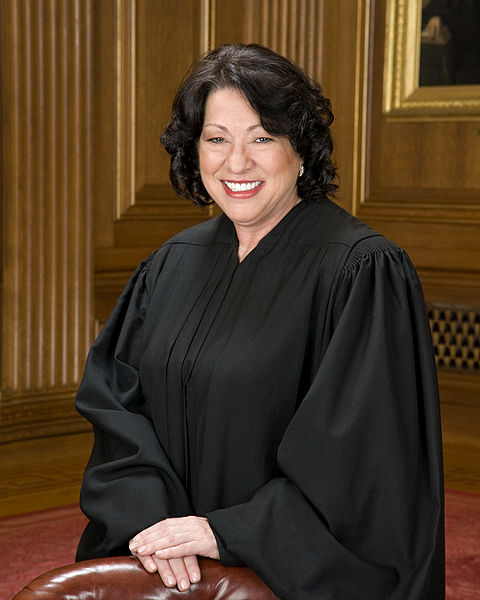National Hispanic Heritage Month: Highlighting Supreme Court Justice Sonia Sotomayor

Justice Sonia Sotomayor made history as the nation’s first Hispanic Supreme Court Justice. Before being appointed to the Court, Justice Sotomayor dedicated her life to public service, including addressing the inequitable treatment of Hispanics. In celebration of Hispanic Heritage Month, Cowan, Liebowitz & Latman invites you to learn more about Supreme Court Justice Sonia Sotomayor and her devotion to public service.
Justice Sonia Sotomayor was born in New York City on June 25th, 1954 to Juan and Celina Sotomayor, both natives of Puerto Rico. The Sotomayors earned a modest income; however, after Juan Sotomayor’s passing, Celina worked 6 days each week to put Sonia and her brother Juan through Catholic school. Celina emphasized education to her children and made sacrifices to buy encyclopedias and other school supplies to ensure her children were well equipped for school.
Sonia graduated from Cardinal Spellman High School in the Bronx and enrolled at Princeton University. At first, she felt overwhelmed by the new environment after receiving a low grade on a writing assignment. In response, she set out to improve her skills by enrolling in more English and writing courses. She became involved with Puerto Rican student groups on campus, especially Acción Puertorriqueña,y Amigos where she fought for the equitable treatment of Puerto Ricans on campus and advocated for a more diverse faculty. According to Sotomayor, these groups gave her the anchor she needed to ground herself in “that new and different world.” Sotomayor went on to graduate summa cum laude from Princeton in 1976 and earned the Pyne Prize, the highest general distinction honor bestowed on a Princeton undergraduate.
In the same year, she was admitted to Yale Law School. At Yale, she was an editor on the Yale Law Journal. Sotomayor earned her J.D. in 1979, passed the bar in 1980, and began working for the Manhattan District Attorney’s office as an assistant district attorney. Colleagues described her as a zealous prosecutor, and one who could not be pushed around.
After 5 years with the DA’s office, Sotomayor joined private practice at a commercial litigation firm. She spent 8 years at the firm, rising from associate to partner, specializing in intellectual property litigation. Sotomayor also served on the board of the Puerto Rican Legal Defense and Education Fund, the New York City Campaign Finance Board, and the State of New York Mortgage Agency. Her pro-bono activities elevated her status in the political arena and brought her to the attention of Senators Ted Kennedy (MA) and Daniel Patrick Moynihan (NY).
In 1991, acting on recommendation from Senator Moynihan, the Bush administration nominated Sotomayor to the District Court for the Southern District of New York. Sotomayor was appointed to the court and became the youngest to hold the post. She served on the district court bench for five years where she handled high profile cases such Castle Rock Entertainment, Inc. v. Carol Publishing Group, which addressed the copyright fair use doctrine. In 1997, Sotomayor was nominated and confirmed for a seat on the Court of Appeals for the Second Circuit.
Sotomayor’s rise in the judiciary would not stop there. With the retirement of Justice David Souter in 2009, President Obama nominated Sotomayor to the Supreme Court. She was confirmed by the Senate in August 2009 and became the first Hispanic woman to serve on our nation’s highest court. On the bench, she is known for her devotion to affirmative action and criminal justice reform, aligning with Justice Gorsuch on defending Sixth Amendment rights. Further, her dissents underscore the importance of race, gender, and ethnic identity issues. Justice Sotomayor is an avid public-speaker, topping her colleagues on the bench for frequency of public engagements.
Cowan, Liebowitz and Latman encourages you to recognize diversity and inclusion every month.